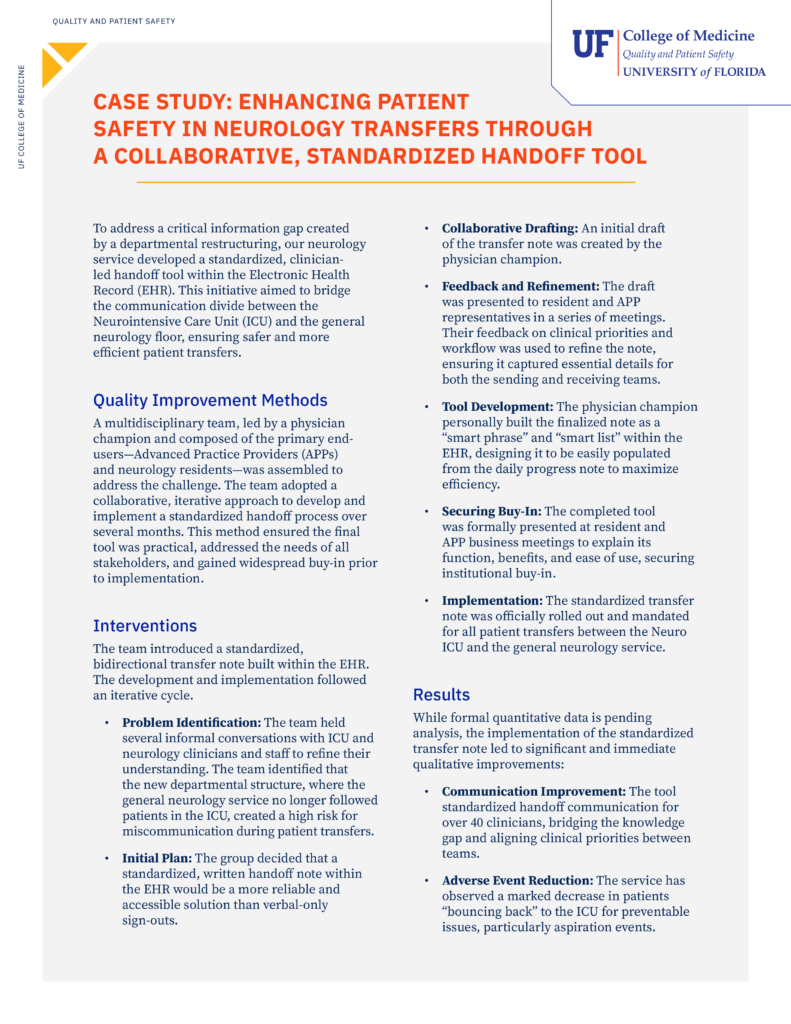Leveraging the EHR for Quality Improvement
The Electronic Health Record is far more than a digital chart; it is a dynamic environment for driving meaningful quality improvement. Leveraging it effectively involves two key activities: exploring data to identify opportunities and implementing tools to create solutions. Both of these activities must be guided by a strong ethical framework that protects patient privacy and ensures data is used responsibly.
Powerful self-service analytics tools, such as SlicerDicer, empower clinicians to ask direct questions of their own clinical data. This allows teams to identify trends and uncover patient safety issues or workflow inefficiencies that may not be obvious on the surface. This data exploration is often the critical first step that informs a focused and impactful QI project.
Once an opportunity is identified, the EHR offers a platform for clinician-led innovation. As demonstrated in the case study on improving neurology transfers, a motivated physician can work with frontline users to build and implement highly effective tools—like a “smart phrase” for handoffs—without needing a formal IT project. This approach, grounded in the principles of clinical informatics, ensures that solutions are practical, efficient and seamlessly integrated into the daily workflow, leading to safer and more reliable patient care.
Resources
The resources below provide a practical look at these concepts in the real world. From a clinician-led case study to foundational guidance on informatics, ethics and data exploration, these materials will equip you to leverage the EHR responsibly and effectively in your own quality improvement work.
Clinical Informatics: The EHR
Learn the fundamentals of clinical informatics and how it serves as a bridge between medicine and technology. This video explains the “three pillars”—people, process and technology—and the “five rights” of clinical decision support, providing a framework for optimizing the EHR to improve workflows and patient outcomes.
Enhancing Patient Safety in Neurology Transfers through a Collaborative, Standardized Handoff Tool
Explore a detailed case study of a clinician-led initiative that successfully developed and implemented a standardized handoff tool within the EHR. This resource outlines the QI methods, iterative design process and key takeaways for driving adoption and improving patient safety without formal IT development cycles.
Explore the Neurology Transfer Patient Safety Case Study
See examples of the UF Health Team implementing:
- Communication for QI
- Checklists
- Stakeholder engagement
Watch a narrative overview of how a neurology team addressed a critical patient safety risk by creating a standardized transfer note in the EHR. This video highlights the importance of capturing nuanced clinical decision-making and using anticipatory guidance to prevent adverse events, showcasing a model for rapid, clinician-led innovation.


